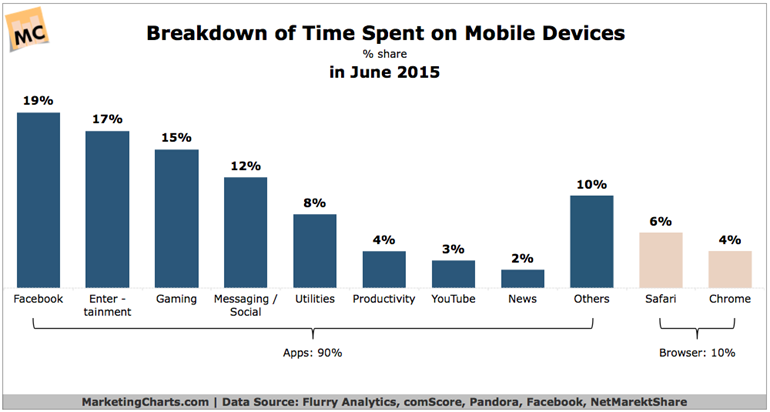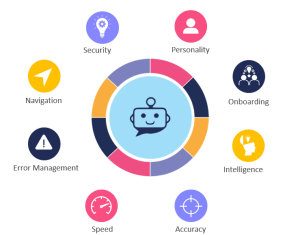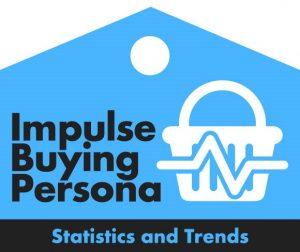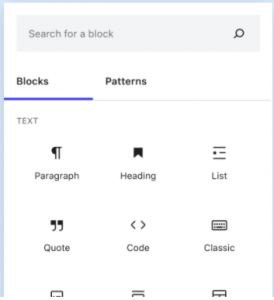The first months and years of your start-up will likely be wrought with ups and downs. You’ve probably prepared for some level of inconsistency, but there’s a way to make sure you make the best decisions at every step. Whether you have a small, shoestring budget or some extra capital to work with, tracking your business with current metrics can help. And despite what you may have heard about analytics, it’s never too late or too early to start.
Startups have a unique problem when it comes to analytics. They don’t have baseline information to work from yet, and digital activity may spread through many channels, making creating a singular, cohesive picture difficult. However, those who fail to explore and adopt analytics early on may miss out on valuable data they can use to grow at a rapid rate in the competitive startup marketplace.
Mobile Vs. Desktop
A few major startups of 2015 focused on real-world products, such as Eero (a company that developed the use of a small device to extend Wi-Fi signals), but many more have moved solely into the mobile arena. App-centric startups often require significantly less capital to get moving, and many represent breakthrough, easy-to-use services for smartphone and tablet users. Periscope, Ride, and Honor (an on-demand senior caregiving matchmaker service) came into the spotlight as startups in 2015, and all focus on app-centric services.
Finding KPI’s
Even startups that focus on app-based products need to think about KPIs (key performance indicators) in traditional desktop environments as well as mobile environments to grasp a deeper understanding of consumer interest and brand reach. For app-centric startups, the best KPIs may be a set of metrics that create clear measurement of user experience, since apps with a great UX and premise tend to sell themselves. For other startups, the best KPIs for online activity may revolve around traffic generation and visibility metrics to help a company gauge online impact.
Instead of using every metric you can get your hands on, focus on one or a few that provide a comparative base to drive short- and long-term activities. For instance, a total number of hits or conversions is a vanity metric that may not help startups in their early days. Instead, target activity per day or week, and focus on optimization or individual segments over time. Every company is different and will use a unique set of KPIs to drive analytics. Choose the qualitative and quantitative KPIs your company can use to grow, change, and optimize.
KPIs startups may use include:
- Financials. Acquisitions (specifically the cost of an acquisition), lost customers, revenue in a certain timeframe.
- Digital Marketing. New site visitors, repeat visitors, length of time on mobile vs. desktop sites, new app downloads, number of social mentions, referral rates.
- App-specific. Amount of time spent in the app, number of in-app purchases, feature use.
- Ecommerce specific. Number of items in cart, number of abandoned carts, average number of items sold per day/week, most popular pathway for sales.
The Right Tools
Once startups have recognized KPIs, some will play around with free analytics tools such as Google Analytics or platforms like Piwik. Flurry has also become a popular choice as a free app-analytics tool that’s easy for anyone to use. For companies that have a strong understanding of relevant KPIs, finding the right analytics platform is a matter of preference and accessibility. For example, tools like GoSquared focus entirely on ecommerce metrics.
We recommend that all individuals, startups, and legacy companies try out Google Analytics (for desktop and mobile app activity) and other free tools to get a feel for the usability and KPI tracking capabilities. Until a company starts to understand the impact of analytics and regularly uses them, paying for a platform may not make sense. However, do recognize that you get an added level of depth, precision, and support when you upgrade to a paid tool or platform over the free version.
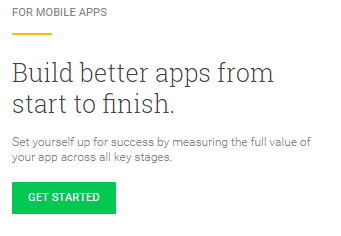
Unfortunately there’s no magic wand that will pick the best tool for your business. It will take a little research to find the tool that best suits your needs. If you’re interested in a starting place, this Reddit thread offers recent discussions on some of the major platforms real businesses use, like, and dislike. Consider free, freemium, and premium services focused on what you need to measure when you explore analytics vendors.
Tools Are Only Half The Battle
Deciding on a tool is only the beginning. Every company needs to keep data that directly impacts company operations in house. That means someone in your company or a new hire needs to take on the role of data champion. Until recently, even large corporations might invest in an analytics tool only to continue to allow the same subjectivity of managers and executives to drive action. As a startup, you have the perfect opportunity to create a culture of data acceptance and use on the ground floor. Keep the following tips in mind:
- Focus analytics practices on a few KPIs
- Schedule data reviews and updates regularly
- Use the findings to drive action
Use Social Media To Your Advantage
As a startup that may not have much capital to dedicate to tools or analytics specialists, you also have another data approach in your toolbox. Public speaker and author Alistair Croll highlights a lean approach to analytics. Startups should focus on finding the primary questions they need to answer and use creative problem solving skills to find the solutions. In one example, a startup called Localmind wanted to help people find answers to simple questions about a geographical location.
Instead of creating a complicated code, Croll’s company Year One Labs encouraged the business to find an alternative solution. In the end, it used Twitter to geofence answers to relevant questions for travelers. The analytics solution was simple and allowed the enterprise to answer a high risk question that served as the premise for the company: Will strangers online answer the questions? The startup was ultimately acquired by AirBnB.
This is just one example of how creative thinking can help a company find relevant analytics at no cost to the startup (other than time). You may be able to answer customer insight questions, app acceptance questions, and others without investing in confusing analytics platforms and tools.
So what are you waiting for? Start your analytics journey today with an open mind and a willingness to explore the ready-made tools available online. Use analytics to answer your tough startup questions and measure and optimize your marketing, sales, and customer support service areas as you grow. One thing is certain – any commitment to a data drive approach will yield actionable insight.
About the Author: Stephen Moyers
Ways to Gather Start-Up Analytics (And Use Them)
The post Ways to Gather Start-Up Analytics (And Use Them) appeared first on Search Engine People Blog.
(85)


